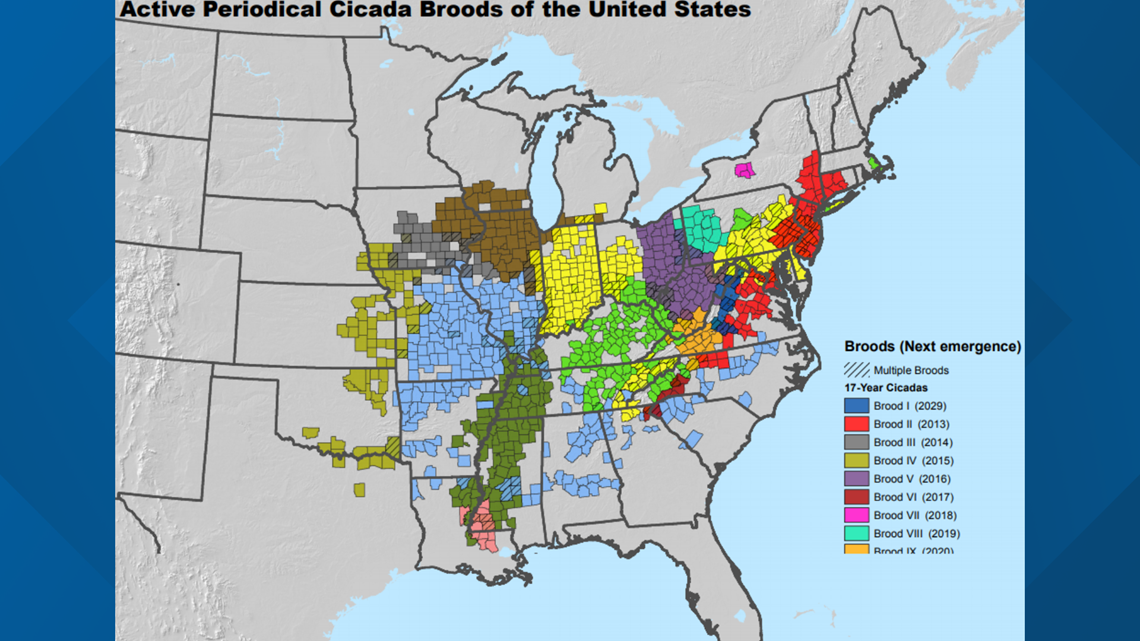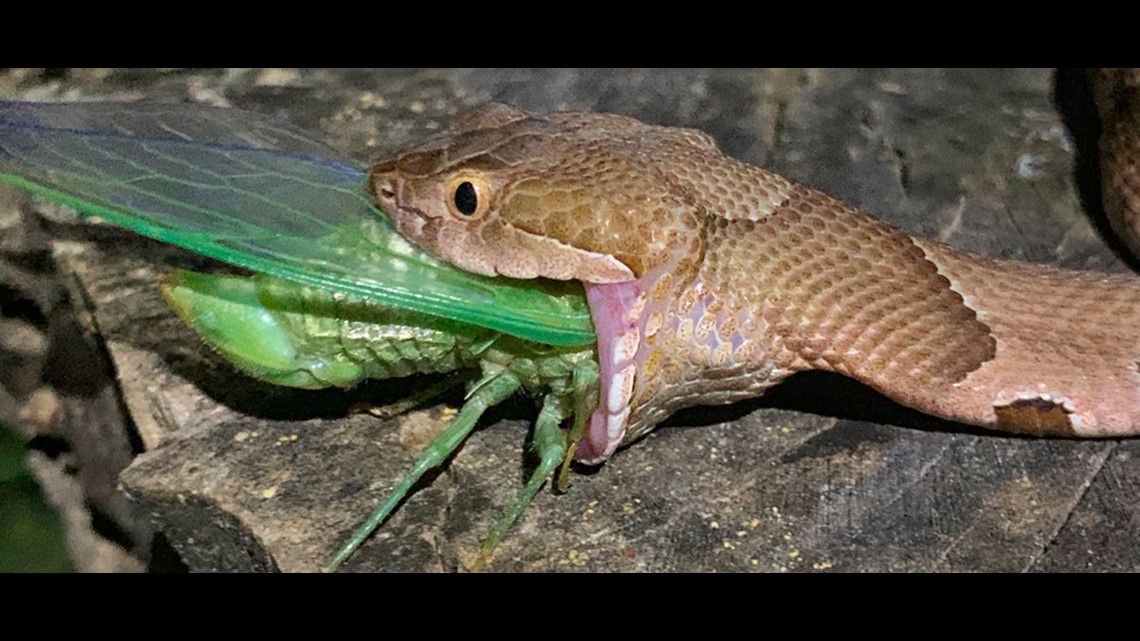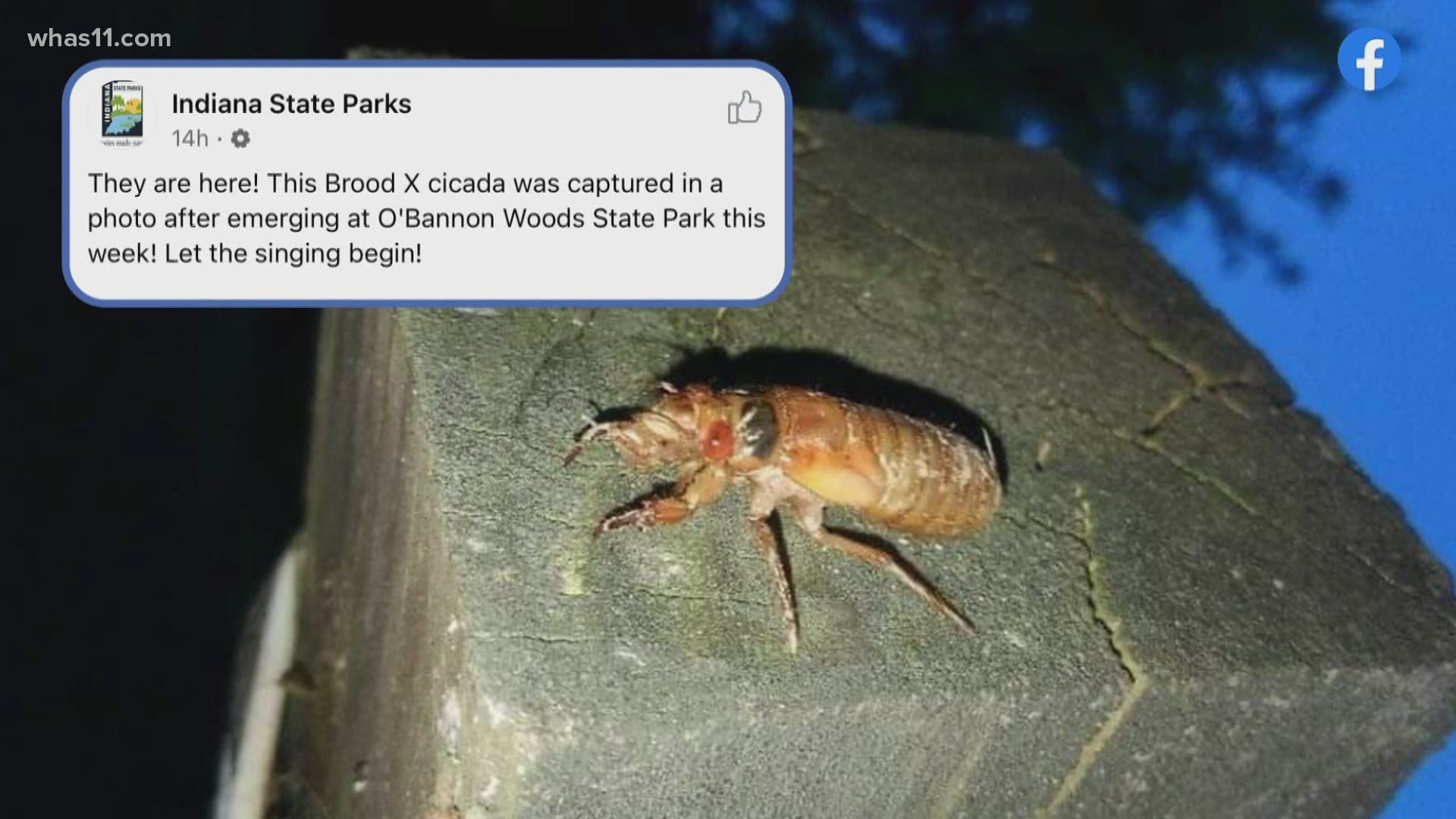CORYDON, Ind. — Most have heard the buzz about an incoming swarm of singing cicadas this spring. But on Sunday, Indiana State Parks shared a photo showing they are finally here.
The cicadas of Brood X, trillions of red-eyed creepy bugs, come out from underground only every 17 years. Hoosiers have been waiting for the arrival of the "big brood" and on Sunday, there was confirmation that this singing swarm is back.
Indiana State Parks shared a photo of a Brood X cicada that had emerged this week at O'Bannon Woods State Park, which is in the southernmost part of the state.


This cicada is one of trillions, yes trillions, that are crawling out from under the ground.
The brood that is emerging has been dubbed "Brood X" by scientists and is also known as the "Great Eastern Brood." Brood X will be seen in 15 states with heavy concentrations in Indiana.


But don't worry, Indiana State Parks said they come in peace.
"Cicadas are native and are an important part of the ecosystem. They do little harm and don’t need to be sprayed with pesticides," Indiana State Parks said in a Facebook post Sunday.
Cicadas are an important food source for many animals, including birds, squirrels and raccoons. Even wild turkeys and snakes enjoy the high-protein snack cicadas provide.


They're even safe for your pets to eat... well, kind of. The cicadas themselves are safe but veterinarians say pet owners should be wary of allowing their pets to eat the skin cicadas leave behind.
"Insect shells are made out of chitin — not easy to digest," said Dr. Jim Dechand, a veterinarian with the Pet Wellness Clinics in Westfield. "One or two's probably fine, 50 is probably not. The most likely problem there is just digestive upset, vomiting, diarrhea."
And it's dogs that typically get into more trouble than cats.
"I suppose if you had a glutton of a cat and that cat went ahead and ate a bunch of them, you might have a problem, but cats tend to be a little more picky, they tend to play with things. Probably not as likely to eat those things," Dechand said. "Whereas you get the average Labrador and he eats every one he can find."

